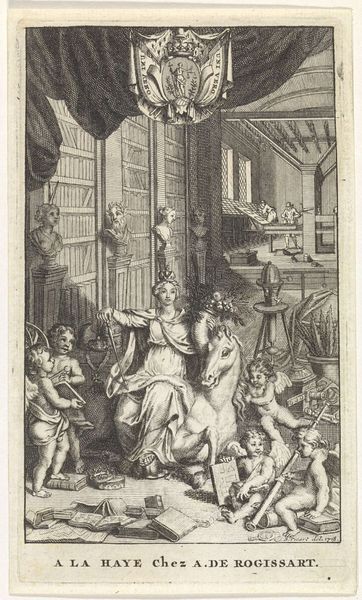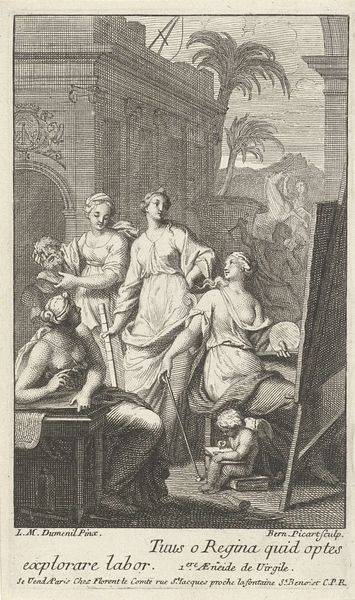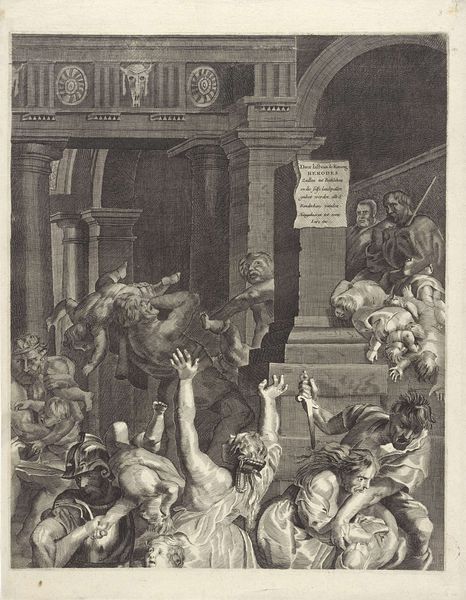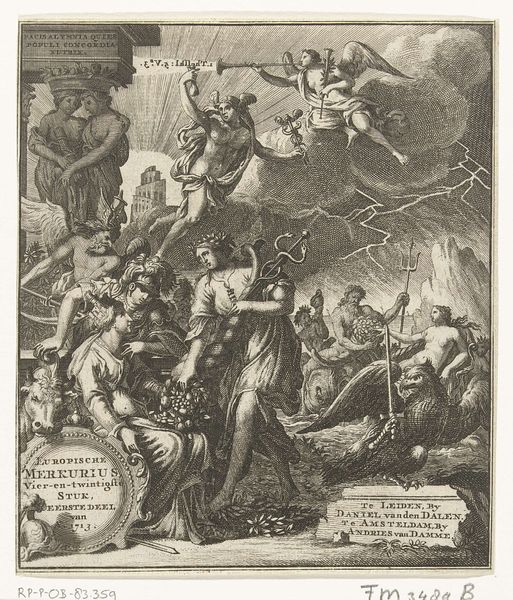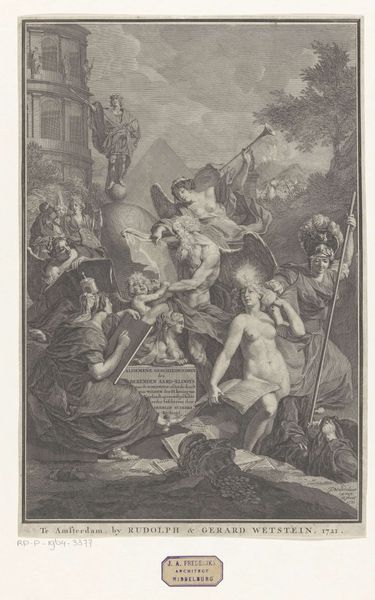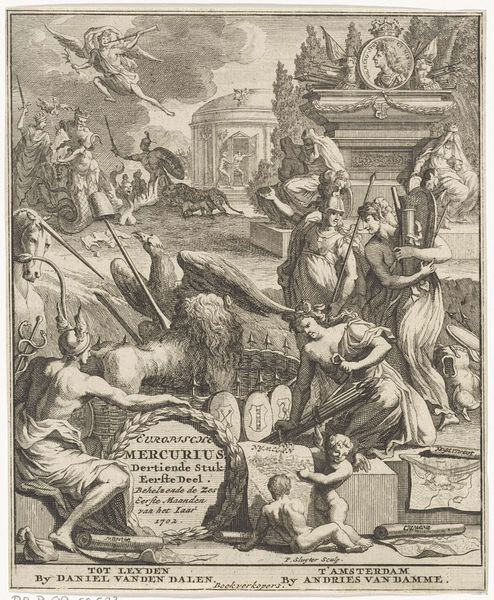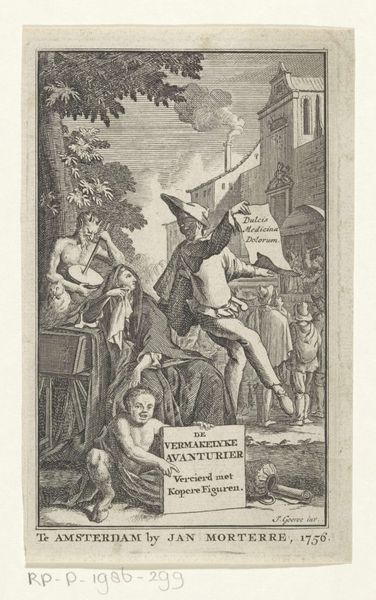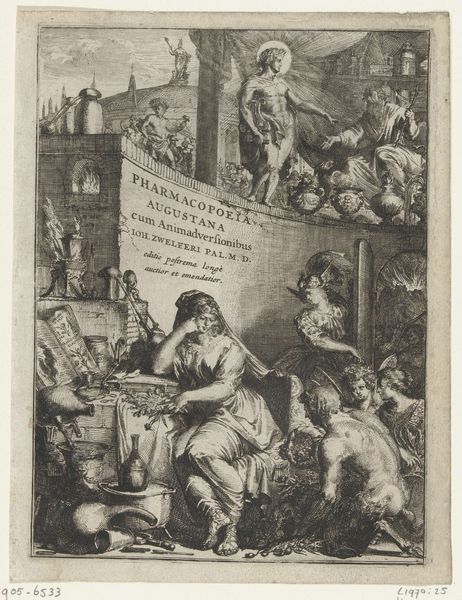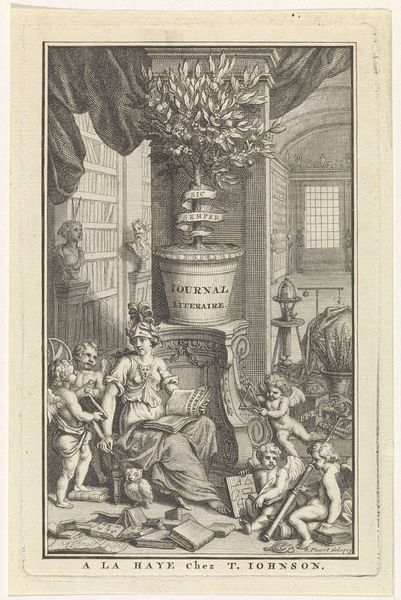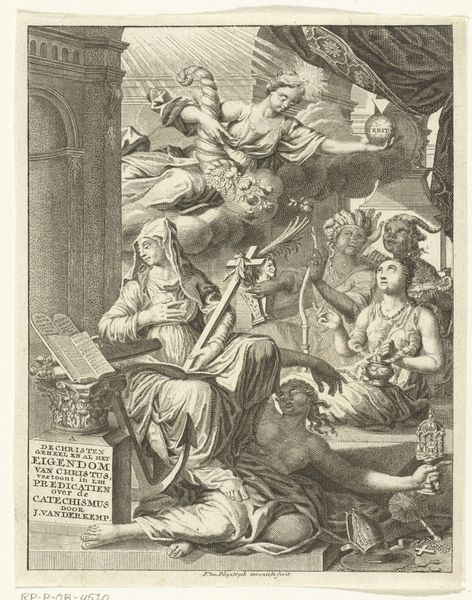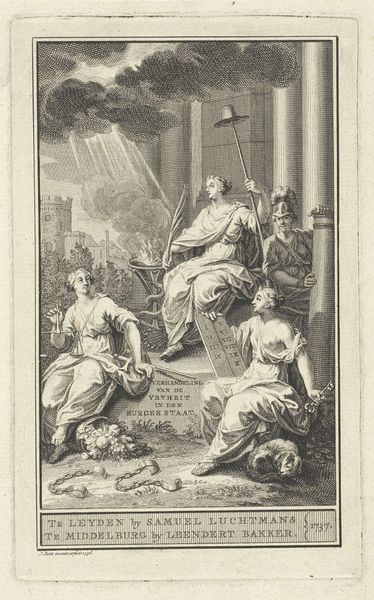
Titelpagina voor: Orazio Torsellino, Historiarum, ab origine mundi, usque ad annum (...) MDXCVIII, 1718 1718
0:00
0:00
pietersluyter
Rijksmuseum
print, engraving
#
allegory
#
baroque
# print
#
old engraving style
#
history-painting
#
engraving
Dimensions: height 128 mm, width 78 mm
Copyright: Rijks Museum: Open Domain
Editor: This is the title page for "Historiarum, ab origine mundi, usque ad annum MDXCVIII" by Orazio Torsellino, from 1718, made by Pieter Sluyter. It's an engraving and the style appears to be Baroque. It's very dense, and there is a lot happening in it; can you share your perspective on it? Curator: From a materialist lens, let's examine the production and consumption context. As a printed engraving, this title page wasn't intended as an isolated 'art object.' It served as an integral component of a book, participating in the wider material culture of the time. Consider the labour involved – the engraver's skill, the printing process, the distribution networks. Editor: That’s a really interesting point; it wasn’t meant to be a stand-alone artwork but as a piece in a broader piece of material. How does the print medium shape the meaning? Curator: Precisely! The act of engraving, which is a more replicable form of art than other fine art processes, makes information more accessible. Who had access to this book, and what was the intended audience? That also directs meaning-making, too. Note the classical architecture and allegorical figures, all communicating ideas of history, knowledge, and divine authority in a format intended for potentially wide distribution, though not ubiquitous because books would be costly. Editor: So, you're saying that the choice of engraving and the imagery work together to convey and disseminate knowledge, but within a specific socioeconomic framework. I didn't really notice it as something reproducible before you mentioned that; now it makes more sense! Curator: Exactly. By thinking about production and reception, we go beyond the pure aesthetic and delve into how this image functioned within its society. And now, think about what a digital reproduction means in a different economic sphere. Editor: That gives me a lot to think about regarding the function of images within larger systems of production and consumption! Thanks!
Comments
No comments
Be the first to comment and join the conversation on the ultimate creative platform.
